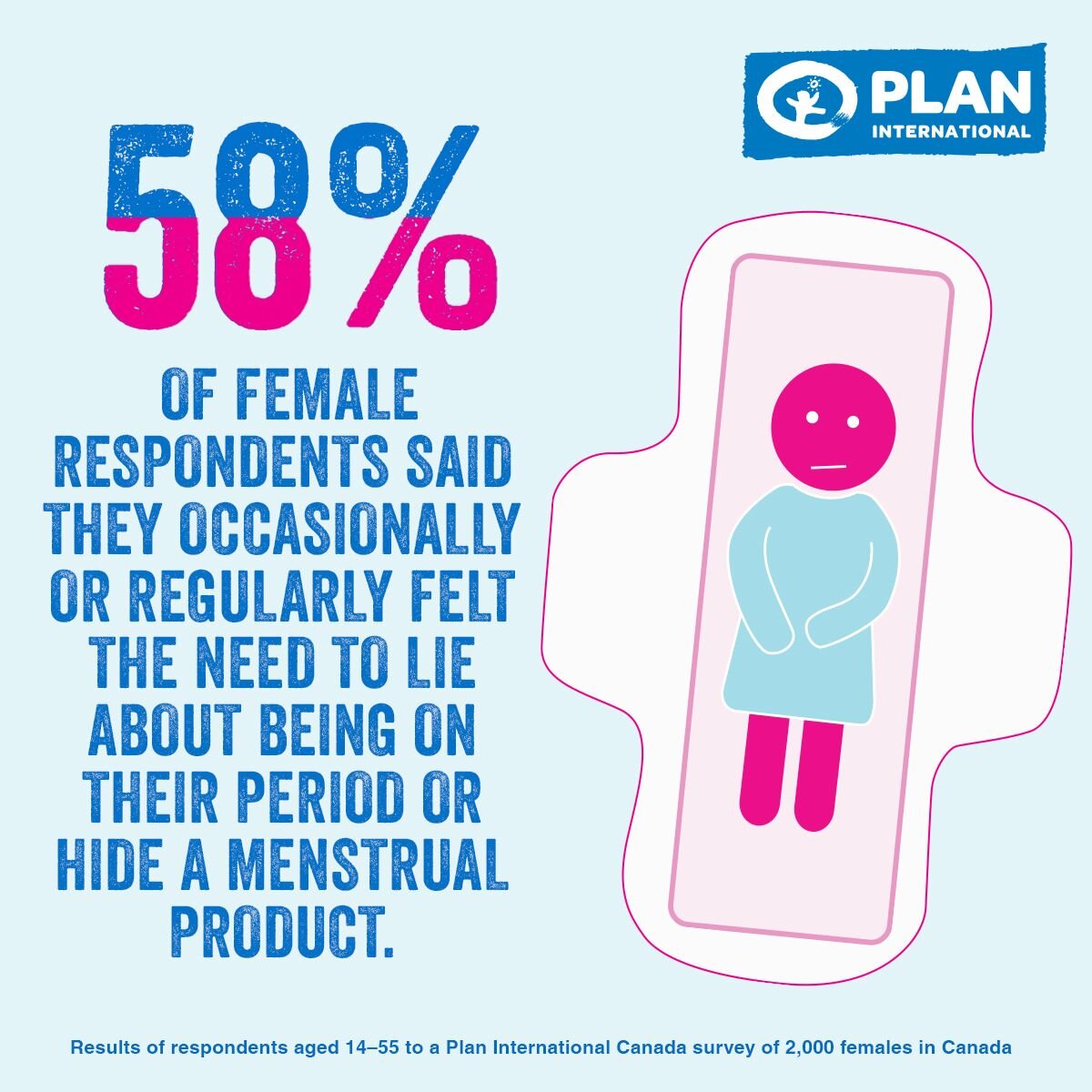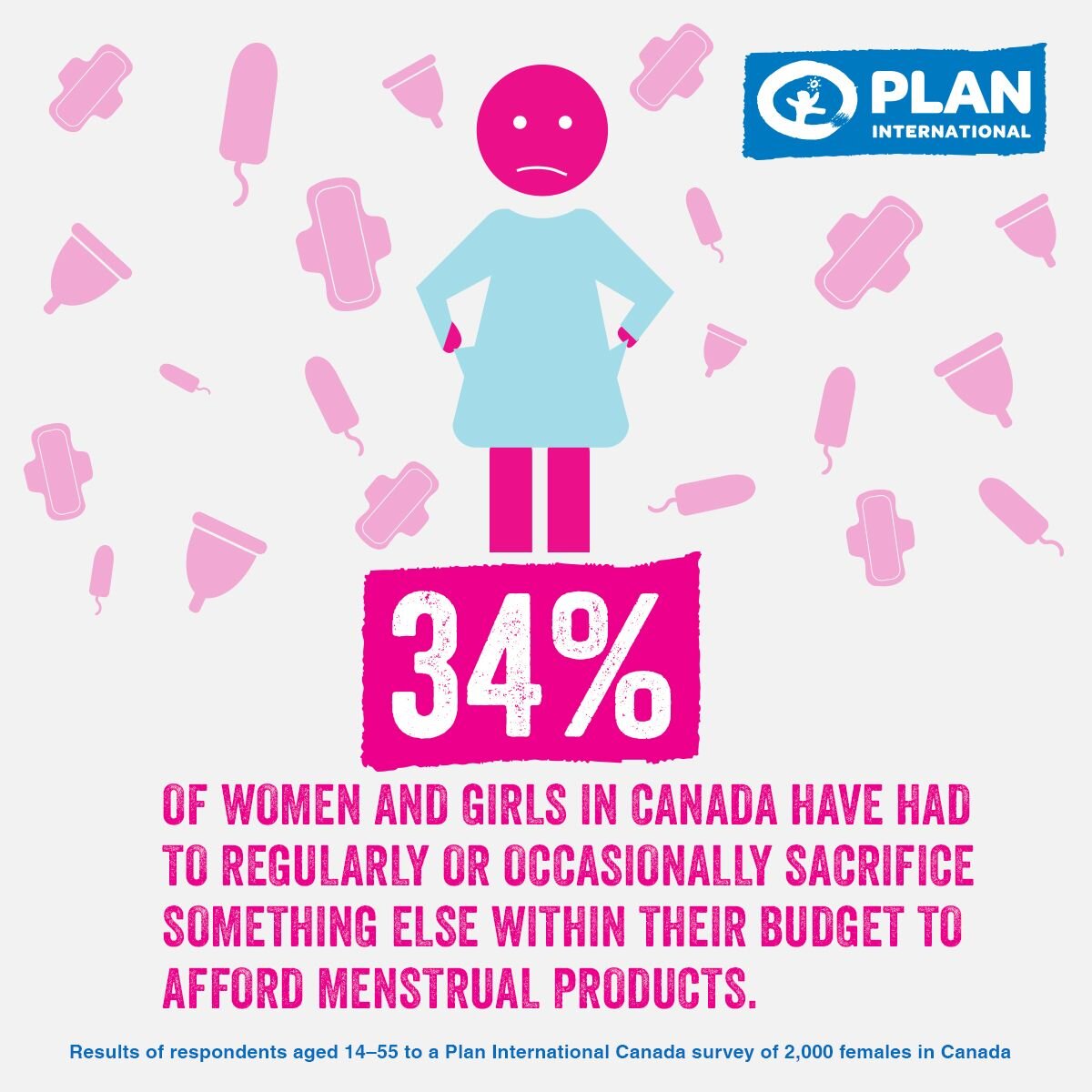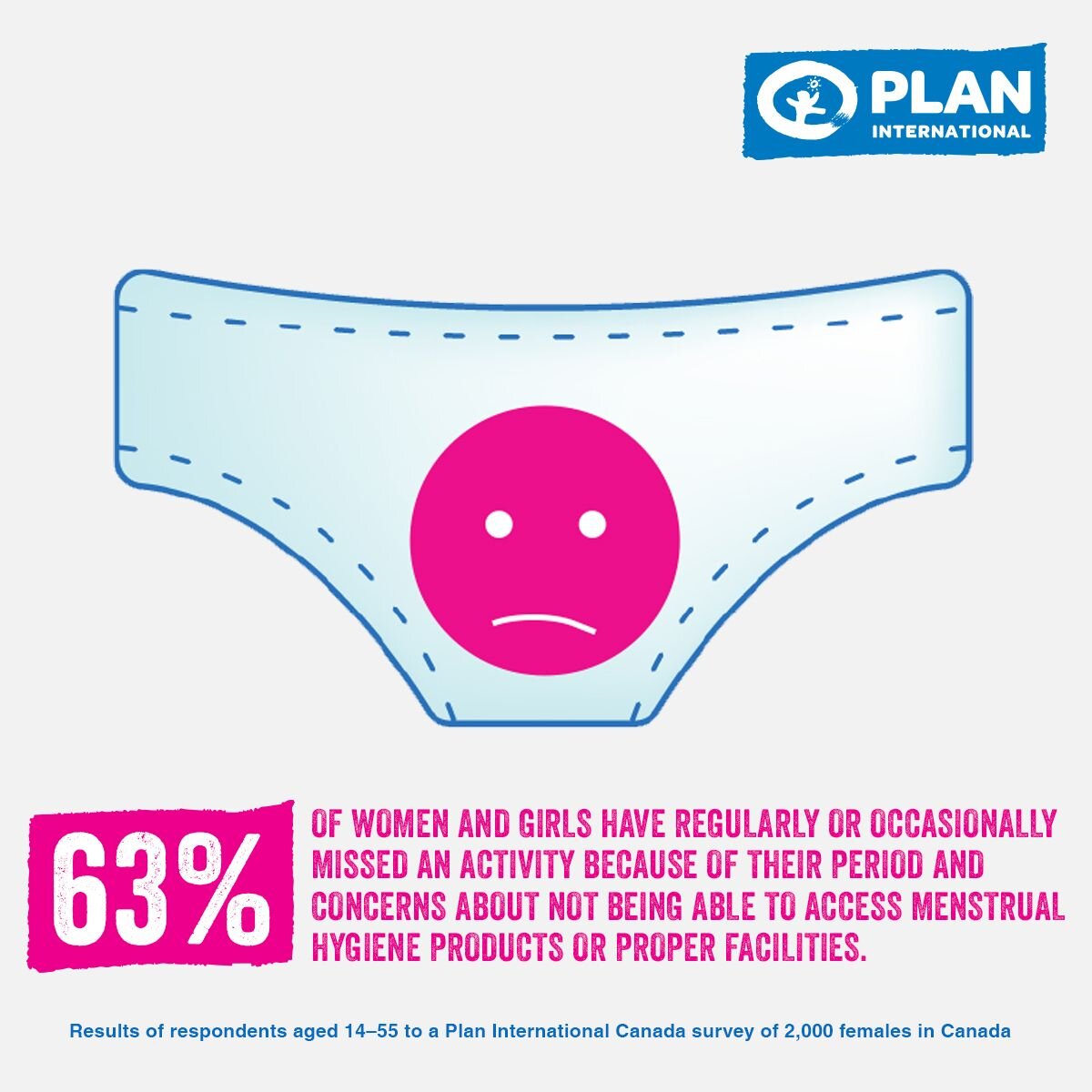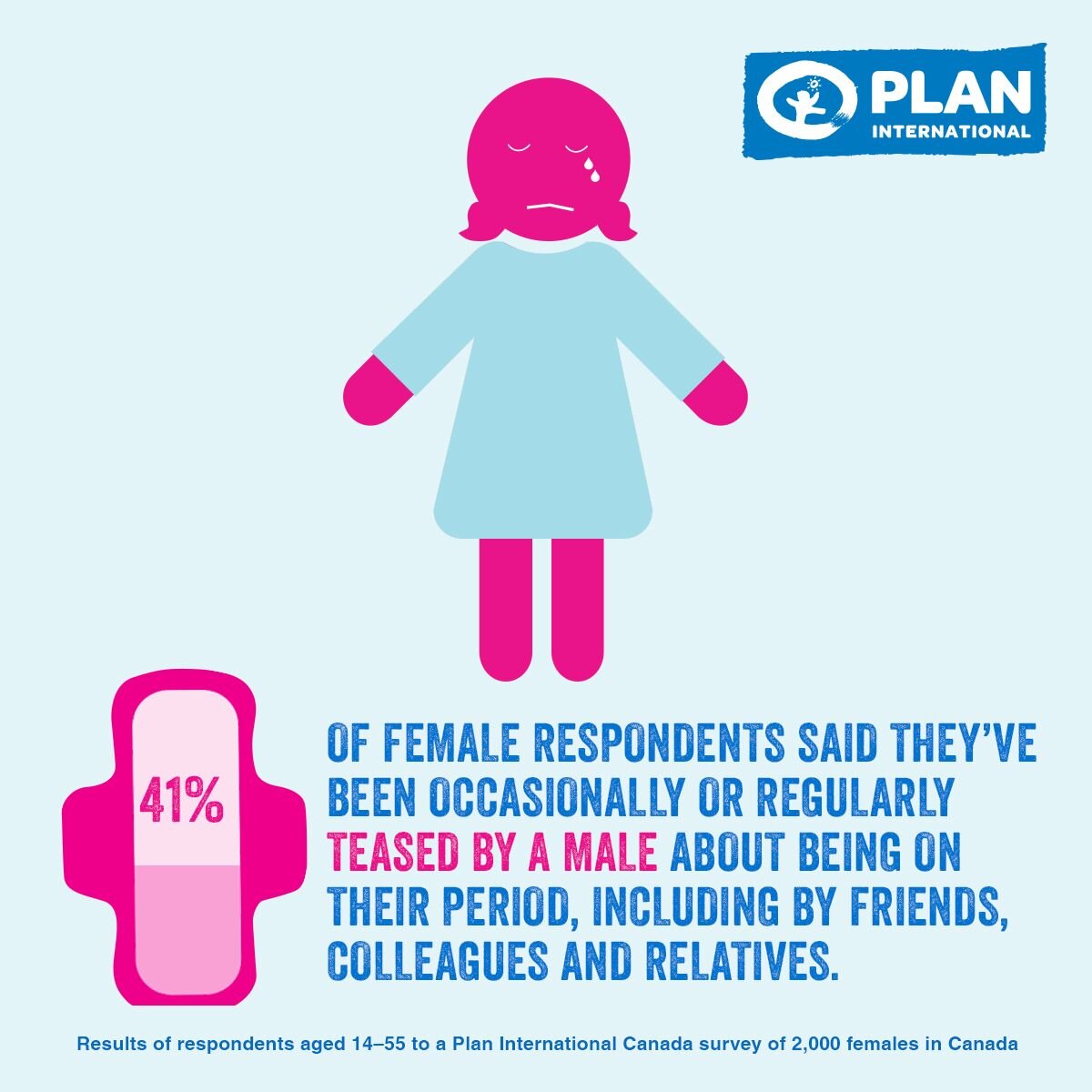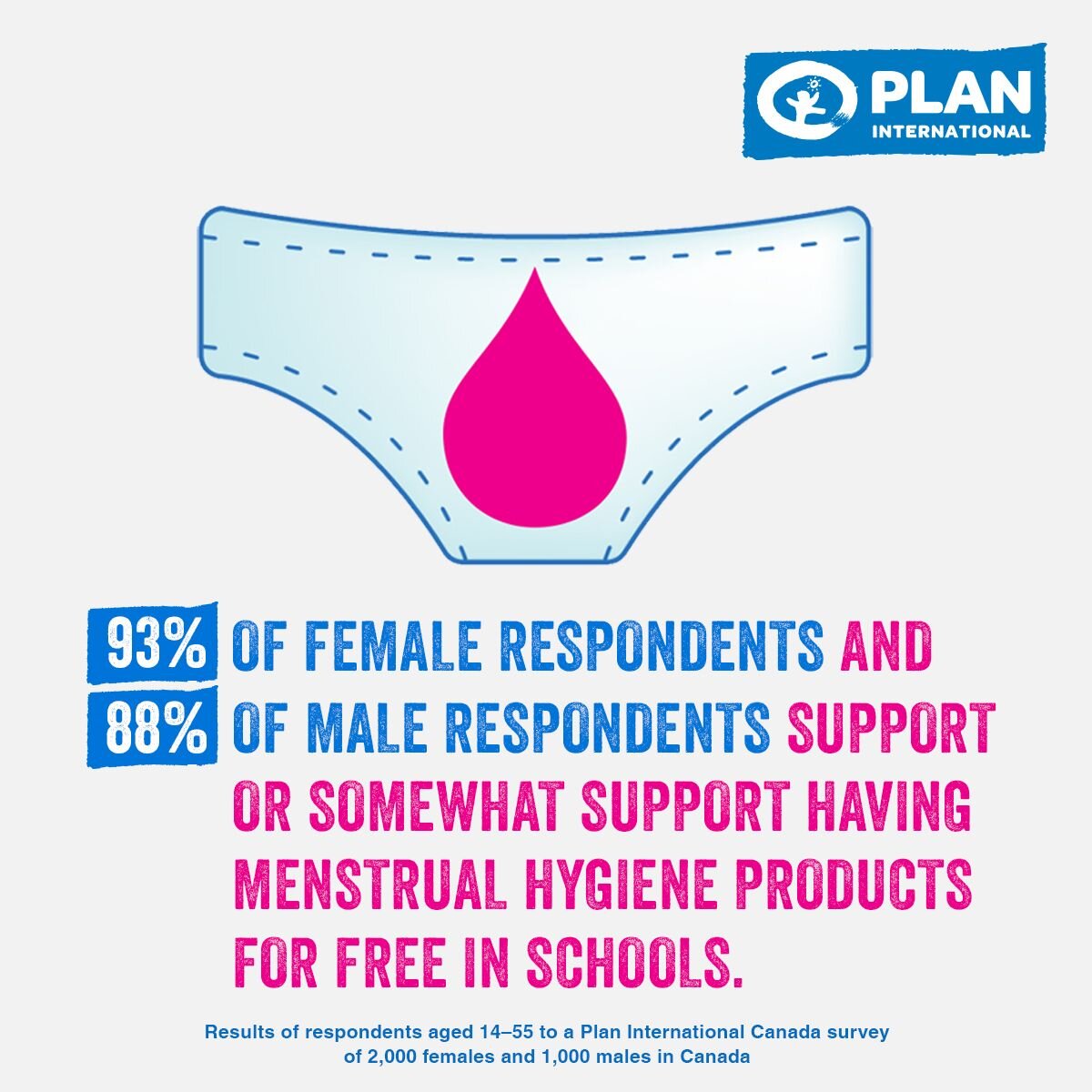Period Poverty
Image Description: Banner with blurred red light blobs on a black background with text ‘Period Poverty’ in the centre
The Facts
34% of [people who menstruate] in Canada have had to regularly or occasionally sacrifice something else within their budget to afford menstrual products.
63% of [people who menstruate] have regularly or occasionally missed an activity because of their period and concerns about not being able to access menstrual hygiene products or proper facilities.
“In rural areas, the cost of feminine hygiene products is sometimes double that of the same products in large urban centres (Brown, 2017). This gap is even more extreme in remote First Nation Communities where a box of tampons can be $16-$45.00 (Vieira, 2019).” - Moon Time Sisters
“ In rural areas, the cost of feminine hygiene products is sometimes double that of the same products in large urban centres.”
Stigma
58% of female respondents said they occasionally or regularly felt the need to lie about being on their period or hide a menstrual product.
41% of female respondents said they’ve been occasionally or regularly teased by a male about being on their period, including by friends, colleagues and relatives.
Get What You Need
Because of generous donations, DWS currently has LOTS of pads and tampons and have received some menstrual cups, specifically Diva Cups in sizes zero and one.
Menstrual supplies are expensive in the subarctic! (Heck! They can be expensive even down south!) So, please give DWS a call if you’d like to pop by and pick up some pads, tampons, or a menstrual cup - 867.993.5086.
Mähsi cho BYTE Yukon for sharing supplies they received as part of a Rising Youth Foundation grant.
Want to help fight period poverty in Dawson? Make a donation to DWS.
Not All Bad News
93% of female respondents and 88% of male respondents support or somewhat support having menstrual hygiene products for free in schools.
81% of women and girls, and 75% of men and boys support or somewhat support having menstrual hygiene products for free in the workplace.
“Last April, the B.C. government issued a first-in-Canada ministerial order that requires all public schools to provide free menstrual products for students in school bathrooms. ”
“Last April, the B.C. government issued a first-in-Canada ministerial order that requires all public schools to provide free menstrual products for students in school bathrooms. Shortly afterwards, Toronto-area provincial opposition legislator Bhutila Karpoche tabled a bill to recognize May 28 as Menstrual Hygiene Day in Ontario.” - Arushana Suderaeson, Canadian Centre for Policy Alternatives
Menstruation and Trans-Inclusive Language
“Periods aren’t solely a women’s issue. Including other identities doesn’t take away from women’s identity because women are more than reproduction.”
Why do we use ‘people who menstruate’ rather than ‘women and girls’ when we talk about periods? Because not everyone who has a uterus and has periods is a women or a girl? Using the language of gender binary ignores that trans men, non binary, gender queer, and lots more folks menstruate, but are not women or girls.
Also, as Tay Richardson points out that not all cisgender women menstruate. It’s a poor measure of ‘womanhood’.
’Tay Richardson finds the language used in marketing to be off-putting as it plays into the misconception that if you have a period you’re a woman, or not having a period makes you not a woman. Tay notes, “even outside of the trans experience, plenty of cis women don’t get their period or don’t get it regularly. But they’re still women.”’ - Devin-Norell, Teen Vogue
Want to learn more about the gender binary, trans and cisgender folks, and much more? Visit our post on Gender and Unicorns!
Jamie Raines shares his experiences of having periods and being a trans man:

